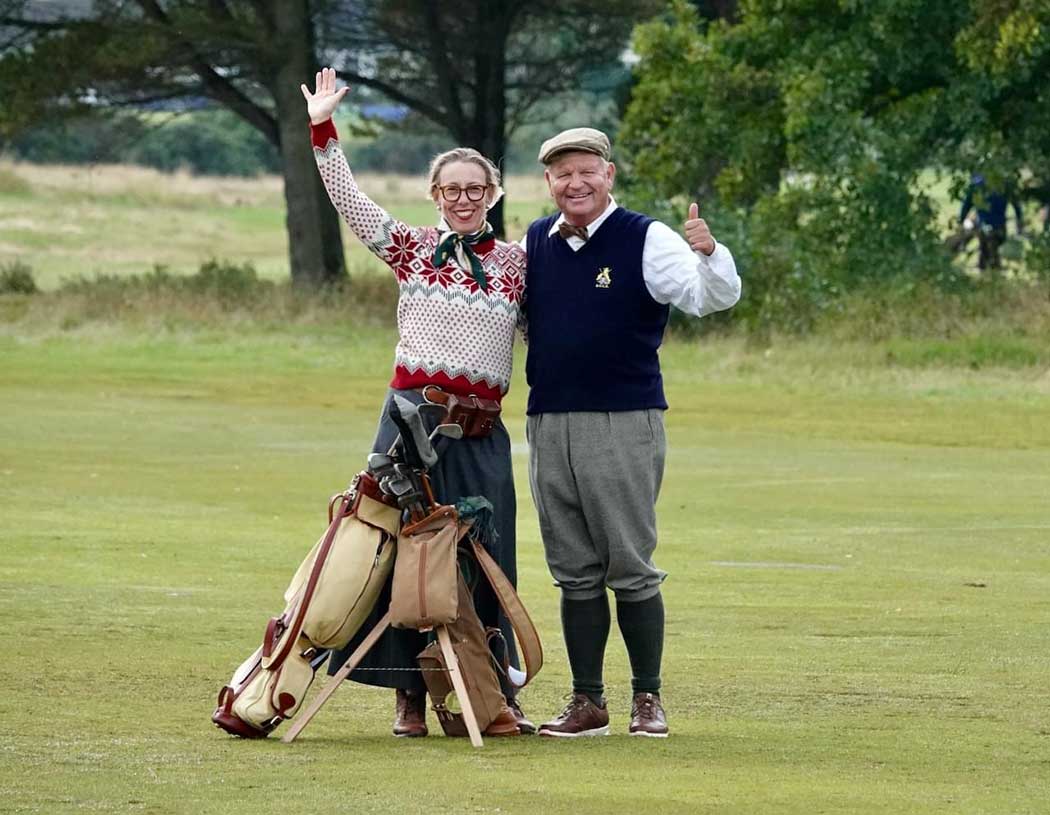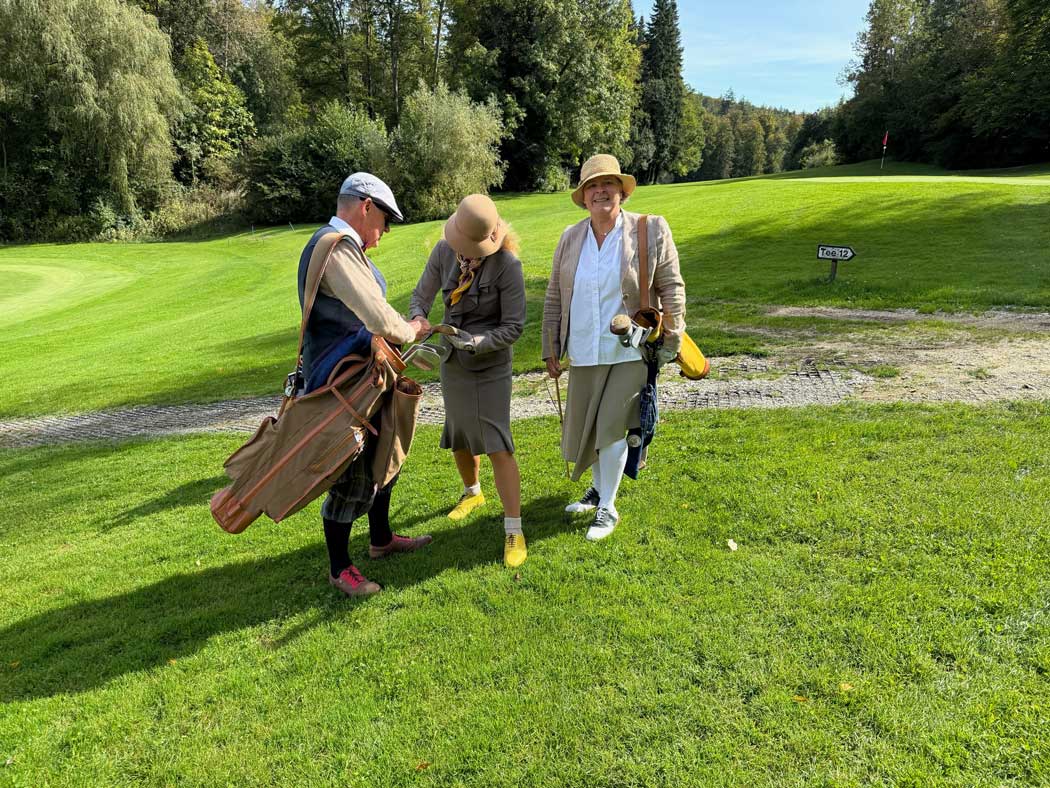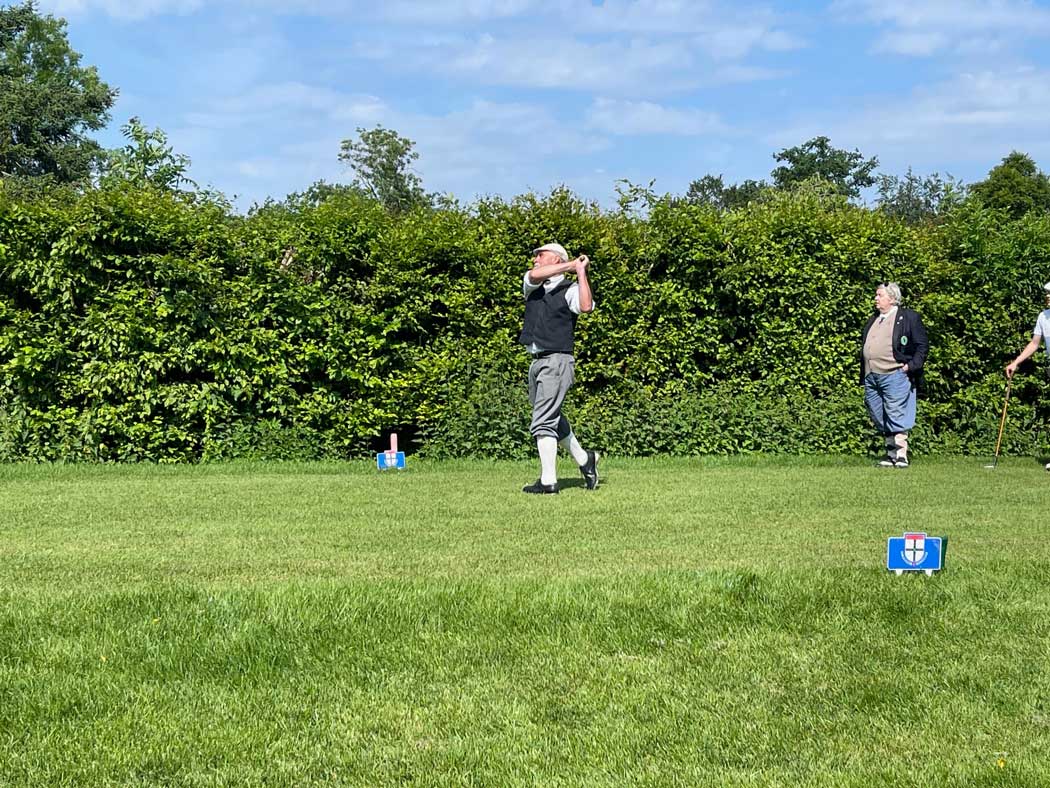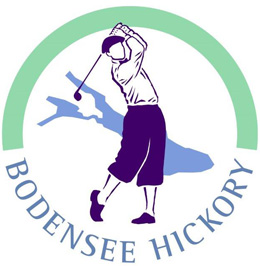Why Hickory Golf is Still Played Today (Fascination, Tradition, Lifestyle)
Playing golf with Hickory clubs is a unique experience. These beautiful, handcrafted clubs, which are at least 85 years old, transform a pleasant outing into an unforgettable and special experience. Hickory golf is the traditional form of classic golf, played with clubs made from the wood of the Hickory tree. This species of walnut, native to North America, provides the hard yet flexible wood for the shafts of golf clubs. Before the legalization of steel shafts by the Royal & Ancient Golf Club of St. Andrews in 1929, the shafts of all clubs were made from Hickory wood. Golf legends like Harry Vardon and Bobby Jones played with Hickories. In fact, John W. Fisher Jr. was the last winner of a major championship (the U.S. Amateur) with Hickory clubs in 1936.
The game with antique golf clubs is becoming increasingly popular, and more and more golfers are succumbing to the charm of these old clubs. “There are still around 200 Hickory golfers in Germany,” says Christoph Meister, Captain of the German Hickory Golf Society e.V., “but many are hesitant to play with clubs that are 80 to 100 years old. Contrary to popular belief, these Hickories are still playable today, and if used accurately and with control, they are hardly inferior to modern clubs.” Hickory golfers often wear clothing reminiscent of the 1920s, and for many, it is not just about a nostalgic lifestyle but also about the spirit of competition.
The iron heads, hand-forged by Scottish craftsmen, and the wooden heads, lovingly crafted by clubmakers, have a rich history. The Hickory wood, which arrived on ships from America, was stored for two years before being crafted into shafts in Scotland. The custom-made shafts were then fitted into the clubs by experts. Wonderfully fragrant leather grips completed the process. These clubs were trusted companions, bearing names (like Mashie, Niblick) instead of numbers, and players learned to love and appreciate their individual qualities. These clubs were made by specialists, professionals, and sometimes even by great champions themselves.
Hickory golfers take pride in not following every so-called revolution in golf equipment that manufacturers try to sell us every few months. With over 90-year-old wooden clubs and paired with clothing from the 1920s, a unique atmosphere is created. However, the fascination with playing with these old clubs is not just sentimental; Hickory clubs also offer new challenges to seasoned players, especially those who might be a little bored with modern golf. They can even help improve swing technique.
Australian professional golfer and multiple Hickory champion Perry Somers once summed it up perfectly, clearly preferring Hickory clubs over modern ones: “There are so many little things that are just beautiful about Hickory golf. The sound of the club, for example. The ‘whoosh’ the wooden shaft makes when you swing it through the air, something a steel shaft doesn’t do. The sound of the ball hitting the wooden head is completely different from hitting a metal head. And playing with a small leather bag over your shoulder is much faster and more enjoyable.”

The Difference Between Hickory Golf and Modern Golf
Playing with Hickory clubs is more satisfying than using modern clubs. You get more feedback, and it seems you automatically adopt a slower, more rhythmic swing. You enjoy the challenge and celebrate every well-executed shot. Distance becomes less important, and every par feels like a birdie.
Perry Somers, a multiple German Hickory Champion, once explained that the smaller sweet spot of the clubs is one of their most interesting features. “Modern clubs are much more forgiving than the old ones,” he says. “They are designed to provide more enjoyment to average or below-average golfers. A Hickory club gives much more feedback, and you quickly learn to swing better.” He often gives his students a Hickory club to help them understand the difference, receive feedback, and improve their technique. “Hickory clubs are more difficult to play, but ultimately they are more rewarding.”
One of the advantages of Hickory golf, which Somers and many other players appreciate, is the simplicity of choice. Hickory golfers typically carry only six or seven clubs in their bag. “The decisions are easier to make,” Somers explains. “You’re not standing there with measuring devices, contemplating for half an hour, only to top the ball 20 meters over the fairway. You just go for it.”
With just six or seven clubs, it often comes down to choosing between one or the other, and for Hickory golfers, there’s a particular thrill in executing a shot with a club that may not have been ideal for the situation. As Somers explains, “There’s a special satisfaction in bringing the ball close to the flag with a shot that might not have been the perfect choice.”

History and Origins of the Game
The origins of golf are the subject of intriguing tales and various myths, such as the shepherd myth, which suggests that golf was invented when bored shepherds began using their crooks to hit stones into rabbit holes. Across the world, sports historians have studied this topic extensively, uncovering many fascinating facts about how golf developed. To this day, it remains somewhat unclear where the game we now know as golf first originated. However, evidence suggests that several countries and regions could have contributed to its inception.
In antiquity, games involving sticks and balls—known as “stick and ball games”—were already being played in places like Egypt and the Roman Empire, as well as in early medieval China with a game called Chuiwan. Today, aside from China, countries like the Netherlands, France, and Belgium are often cited as possible origins. In all of these European countries, various golf-like games existed between the 1200s and 1500s. Some historians believe that the Dutch game Chole, in which players used curved sticks to hit an elliptical wooden ball across fields, roads, and over city walls to a designated point, was brought to Scotland by sailors and may have been the precursor to Scottish golf.
It is widely accepted, especially in the British Isles, that the modern game of golf originated in Scotland, where it spread outside the cities, primarily along the Scottish east coast, from the 15th century onwards. Only in Scottish golf were holes in the ground an integral part of the game from the very beginning, while earlier European golf-like games typically used a post or other targets rather than holes. Scottish golf, as we know it, eventually spread worldwide, while other stick-and-ball games—at least those not involving direct competition between two opposing teams—either disappeared or became regional curiosities.
By the late 17th century, golf began gaining momentum, and by the mid-18th century, the Scottish east coast had become the center for the professionalization of the sport.
In 1744, the Gentlemen Golfers of Leith in Edinburgh (now known as The Honourable Company of Edinburgh Golfers) established the first official rules of golf, which laid the foundation for much of today’s regulations. Just ten years later, the St. Andrews Society of Golfers (now known as the Royal and Ancient Golf Club of St. Andrews) was formed in the small coastal town of St. Andrews.
The 19th century saw both a growing international spread of golf and many innovations within the game. To name a few: the introduction of the gutta-percha ball in 1848, which was a precursor to modern plastic golf balls, the founding of the first women’s golf club in 1867, and the invention of the Haskell golf ball in 1898, featuring a rubber core wrapped in layers of rubber and wool threads.
In the Lake Constance region, golf first appeared in the late 1920s. In 1931, a nine-hole golf course was opened in Konstanz, located right on the shores of Lake Constance. The course was situated immediately south of the dam connecting the island of Mainau to the mainland. Few people parking their cars at Mainau’s visitor parking lot today would suspect that a golf course once existed there.
The present-day Golf Club Konstanz was established in 1965 in a different location in Langenrain. Interestingly, the Bodensee Prize, donated by the city of Konstanz to the old golf club in 1937, is still contested annually. The origins of the Bodensee Hickory Society, largely initiated by Rainer Ersfeld, also trace back to Konstanz.

A Step Back in Time
Would you like to step back in time? Would you like to better understand how the game of golf has evolved over the centuries? Don’t hesitate to contact us, and we will provide you with a special and unforgettable golfing experience during one of our Hickory workshops or a tournament organized by the Bodensee Hickory Society.



